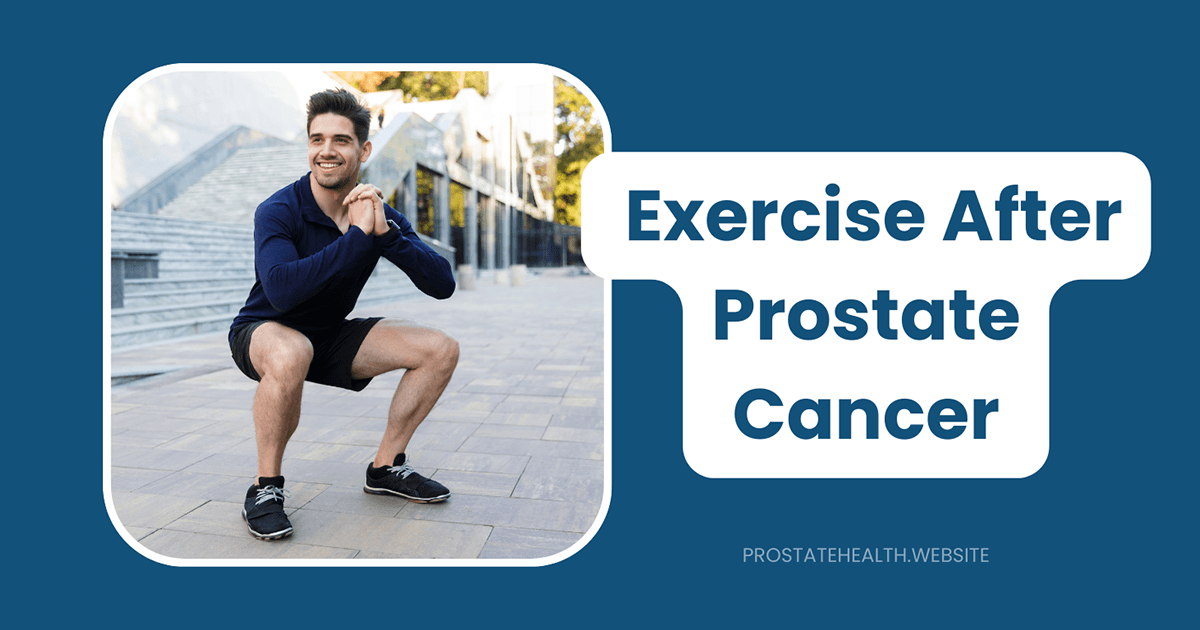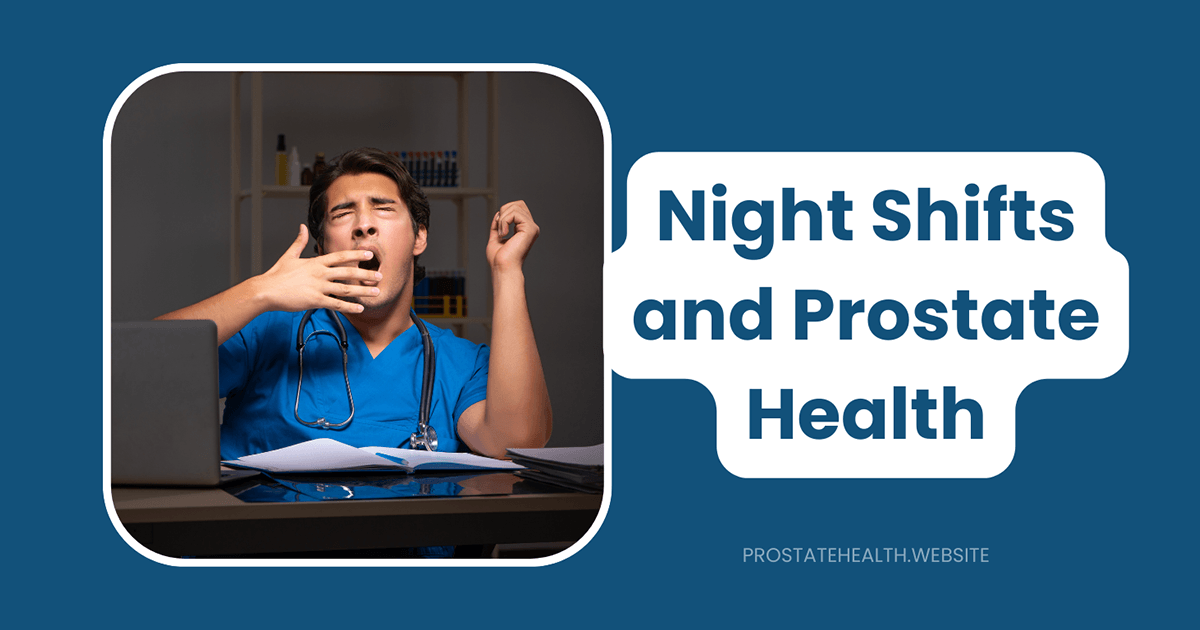Exercise Success Stories: Men Who Improved Their Prostate Health Through Activity

When James, a 67-year-old retired teacher, received his diagnosis of benign prostatic hyperplasia (BPH), his doctor handed him a prescription—but not just for medication. “Start walking 30 minutes daily,” his urologist advised. Six months later, James was getting up only once at night instead of four times, and his medication dose had been cut in half.
“I was skeptical that something as simple as walking could make such a difference,” James told me. “But the improvement in my symptoms has been remarkable. I feel like I’ve gotten my life back.”
James’s experience isn’t unique. Across the country, men are discovering the powerful impact that regular physical activity can have on prostate health. From managing BPH symptoms to improving outcomes after prostate cancer diagnosis, exercise is emerging as a crucial component of prostate health care.
This article shares the inspiring stories of real men who have transformed their prostate health through consistent physical activity. Their experiences, backed by scientific research, demonstrate that exercise isn’t just beneficial for general health—it can specifically and significantly improve prostate conditions.
Ben’s Story: Choosing Lifestyle Over Treatment
At 64, Ben Hunter received news no man wants to hear: prostate cancer, with a Gleason score of 3+3. His PSA had risen from 5.7 to 12.2 ng/ml over ten years. While many men in his situation would immediately opt for surgery or radiation, Ben made a different choice.
“I saw prostate cancer as largely a lifestyle disease,” Ben explains. “So I decided to attack it with lifestyle changes, with exercise being a cornerstone of my approach.”
Ben’s exercise regimen includes:
- Four 45-minute sessions of moderate-to-vigorous exercise weekly
- A combination of brisk walking, swimming, and resistance training
- Yoga twice weekly for stress reduction and flexibility
Alongside his exercise routine, Ben adopted a plant-based diet rich in fruits and vegetables, particularly cooked tomatoes (which contain lycopene, a compound associated with reduced prostate cancer risk). He eliminated dairy and red meat while including fatty fish twice weekly for omega-3 fatty acids.
The results? Ten years after diagnosis, Ben’s PSA has stabilized, and he’s experienced no progression of his cancer. He maintains regular check-ups with his oncologist every 9-10 months.
“Beyond the prostate benefits, I’ve lost weight, have more energy than I did in my 50s, and my blood pressure and cholesterol are perfect,” Ben shares. “I’m convinced that these lifestyle changes, especially regular exercise, have not only helped manage my prostate cancer but have improved my overall health and will likely extend my life.”
Dr. Sarah Johnson, oncologist at Memorial Cancer Center, notes: “While Ben’s approach isn’t right for everyone with prostate cancer, his case illustrates how powerful lifestyle interventions can be, particularly for low-grade, slow-growing prostate cancers. The exercise component is especially important, as we now have substantial evidence that regular physical activity can reduce the risk of prostate cancer progression.”
Michael’s Story: Reversing BPH Symptoms Through Movement
At 58, Michael began experiencing classic BPH symptoms—frequent urination, weak stream, and nocturia that disrupted his sleep 3-4 times nightly. His urologist prescribed medication but also strongly recommended a regular exercise program.
“I was getting up so many times at night that I was exhausted during the day,” Michael recalls. “The medication helped somewhat, but I was still having significant symptoms and worried about side effects.”
Michael committed to a consistent exercise routine:
- Daily 30-minute walks, gradually increasing pace and distance
- Swimming twice weekly
- Pelvic floor exercises (Kegels) three times daily
Within three months, Michael noticed significant improvements:
- Nighttime bathroom trips reduced from 3-4 to just once
- Stronger urinary stream
- Less frequent urination during the day
- Improved sleep quality and daytime energy
“What surprised me most was how quickly I saw improvements,” Michael says. “Within just a few weeks, I was sleeping better. By three months, my symptoms had improved so much that my doctor reduced my medication. Now, a year later, I’m managing my BPH primarily through exercise and diet, with minimal medication.”
Michael’s experience aligns with research findings. A study published in the Journal of Urology found that men who walked regularly reported fewer urinary symptoms related to BPH. The researchers suggested that exercise may reduce sympathetic nervous system activity and improve pelvic blood flow, both of which can alleviate BPH symptoms.
Robert’s Story: Exercise During Prostate Cancer Treatment
When Robert, 71, was diagnosed with intermediate-risk prostate cancer, he opted for radiation therapy. His radiation oncologist suggested he continue exercising during treatment, despite the fatigue that often accompanies radiation.
“I was worried about how I’d maintain my exercise routine during treatment,” Robert shares. “But my doctor explained that staying active could actually help manage fatigue and potentially improve my treatment outcomes.”
With guidance from a cancer exercise specialist, Robert developed a modified routine:
- Short, frequent walks (15-20 minutes, 2-3 times daily)
- Light resistance training using bands twice weekly
- Gentle yoga focusing on relaxation and flexibility
The benefits Robert experienced were multifaceted:
- Less severe fatigue than expected during treatment
- Maintained muscle mass despite some weight loss
- Better emotional well-being and reduced anxiety
- Quicker recovery after completing radiation
“On days when I felt most tired, even a short walk around the block helped boost my energy,” Robert explains. “I’m convinced that staying active helped me get through treatment with fewer side effects and a more positive outlook.”
One year post-treatment, Robert has expanded his exercise routine and remains cancer-free. He now participates in a walking group specifically for prostate cancer survivors, combining physical activity with peer support.
“The camaraderie of exercising with other men who’ve been through similar experiences adds another dimension of healing,” he notes. “We motivate each other and share what’s worked for us.”
David’s Story: High-Intensity Training After Prostatectomy
At 62, David underwent a radical prostatectomy for localized prostate cancer. While his surgery was successful, he struggled with post-operative side effects, including erectile dysfunction and mild urinary incontinence.
“Recovery was harder than I expected,” David admits. “I felt like I’d lost part of my identity along with my prostate. My doctor mentioned that exercise might help with recovery, but I was skeptical.”
Six weeks after surgery, with his doctor’s approval, David began working with a personal trainer who specialized in cancer recovery. Together, they developed a progressive exercise program:
Initial Phase (6-12 weeks post-surgery):
- Walking program, starting with 10 minutes and building to 30 minutes daily
- Pelvic floor exercises, 3 sets of 10 repetitions, 3 times daily
- Light resistance training focusing on major muscle groups
Intermediate Phase (3-6 months post-surgery):
- Introduction of moderate-intensity interval training on a stationary bike
- Expanded resistance training program
- Core strengthening exercises
Advanced Phase (6+ months post-surgery):
- High-intensity interval training (HIIT) 2 times weekly
- Comprehensive resistance training program 3 times weekly
- Continued pelvic floor exercises
The results exceeded David’s expectations:
- Complete resolution of urinary incontinence by 6 months post-surgery
- Significant improvement in erectile function
- Increased energy and restored confidence
- Improved body composition with increased muscle mass
“The high-intensity training was a game-changer for me,” David explains. “It not only helped with the physical side effects but also gave me back a sense of control and vitality that cancer had taken away.”
David’s experience reflects emerging research on the benefits of high-intensity exercise for prostate cancer survivors. A 2025 study found that men who engaged in high-intensity interval training after prostate cancer treatment showed improvements in cardiorespiratory fitness, body composition, and quality of life compared to those who remained sedentary.
Thomas’s Story: Exercise for Advanced Prostate Cancer
Thomas, 74, faced a challenging diagnosis: metastatic prostate cancer that had spread to his bones. While his oncologist started him on hormone therapy and other treatments, Thomas was determined to do everything possible to maintain his quality of life and fight the cancer.
“When you’re dealing with advanced cancer, it’s easy to feel helpless,” Thomas shares. “Exercise gave me a way to actively participate in my treatment and maintain some normalcy in my life.”
Working closely with his healthcare team, Thomas developed an appropriate exercise program that accommodated his condition:
- Daily walking, starting with just 5 minutes and gradually building to 30 minutes
- Gentle yoga modified to avoid pressure on affected bones
- Chair exercises for strength and flexibility
- Water exercises in a warm pool to reduce joint stress
Despite his advanced disease, Thomas experienced meaningful benefits:
- Better management of treatment-related fatigue
- Improved mood and reduced anxiety
- Maintained independence in daily activities
- Enhanced overall quality of life
“Exercise hasn’t cured my cancer, but it’s helped me live better with it,” Thomas explains. “On days when I exercise, I have more energy and less pain. It’s also given me a sense of purpose and accomplishment during a difficult time.”
Thomas’s oncologist, Dr. Michael Chen, notes: “For patients with metastatic disease, appropriate exercise can significantly improve quality of life. We modify recommendations based on the location of metastases and overall condition, but almost everyone can do some form of physical activity safely.”
William’s Story: From Sedentary to Active After Prostatitis
At 45, William was younger than most men with prostate issues when he developed chronic prostatitis/chronic pelvic pain syndrome (CP/CPPS). The condition caused persistent pelvic pain, urinary symptoms, and sexual dysfunction that significantly impacted his quality of life.
“I tried multiple antibiotics and pain medications with limited relief,” William recalls. “I was working a desk job and barely moving throughout the day. My urologist suggested that my sedentary lifestyle might be contributing to my symptoms.”
With this insight, William gradually transformed his activity level:
- Hourly movement breaks during work days
- Daily 30-minute walks, eventually progressing to light jogging
- Pelvic floor relaxation exercises
- Hip mobility exercises
- Stress-reducing activities like tai chi
The changes in William’s symptoms were gradual but significant:
- Decreased pelvic pain intensity and frequency
- Improved urinary function
- Reduced need for pain medication
- Better sleep quality
- Improved sexual function
“It wasn’t an overnight cure,” William emphasizes. “But consistent movement has been the most effective treatment I’ve found. When I skip several days of exercise, my symptoms typically worsen, which is all the motivation I need to stay active.”
William’s experience highlights an often-overlooked benefit of exercise for prostate health: its ability to reduce pelvic floor tension and improve blood flow to the prostate region, which can be particularly helpful for men with prostatitis.
The Science Behind These Success Stories
These men’s experiences are supported by a growing body of scientific evidence:
For Prostate Cancer:
- A study in the Journal of Clinical Oncology found that men who walked briskly for at least 3 hours weekly after prostate cancer diagnosis had a 57% lower rate of disease progression compared to men who walked less.
- Research published in the European Urology journal showed that men who engaged in 3+ hours of vigorous activity weekly had a 61% reduced risk of dying from prostate cancer.
- A 2025 study found that high-intensity interval training improved cardiorespiratory fitness and was associated with decreased PSA levels in men with localized prostate cancer.
For BPH:
- A large-scale study following over 28,000 men for nearly 8 years found that those who engaged in regular physical activity had a significantly lower risk of developing BPH symptoms.
- Research in the Archives of Internal Medicine demonstrated that men who were physically active were less likely to experience worsening of BPH symptoms over time.
- A Harvard study found that even modest amounts of physical activity were associated with reduced risk of BPH surgery.
For Overall Prostate Health:
- Exercise has been shown to reduce inflammation, improve immune function, and optimize hormone levels—all factors that influence prostate health.
- Physical activity improves circulation to the pelvic region, which may enhance prostate function and reduce congestion.
- Regular exercise helps maintain healthy weight, which is important since obesity is associated with increased risk of prostate problems.
Starting Your Own Success Story: Practical Tips
Inspired by these success stories? Here’s how to begin your own prostate health exercise journey:
1. Start Where You Are
- If you’re currently inactive, begin with short walks (even 5-10 minutes) and gradually increase duration
- Focus on consistency rather than intensity initially
- Remember that some activity is always better than none
2. Find Activities You Enjoy
- Walking is accessible for most men and highly beneficial
- Swimming and water exercises are excellent low-impact options
- Cycling (with a prostate-friendly seat) can provide cardiovascular benefits
- Resistance training helps maintain muscle mass and bone density
- Yoga and stretching improve flexibility and reduce stress
3. Include Prostate-Specific Exercises
- Pelvic floor exercises (Kegels) can improve urinary control and sexual function
- Hip mobility exercises may reduce pelvic tension
- Core strengthening supports overall pelvic health
4. Work With Your Healthcare Team
- Get medical clearance before starting a new exercise program
- Discuss any prostate-specific precautions based on your condition
- Consider working with a physical therapist or certified cancer exercise specialist if available
- Adjust your program based on treatment side effects or symptom changes
5. Track Your Progress
- Keep a simple log of your activities and any changes in symptoms
- Note improvements in urinary function, energy levels, and overall well-being
- Share this information with your healthcare providers
Community Support: Finding Your Exercise Tribe
Many men find that exercising with others enhances motivation and provides valuable support:
- Prostate cancer exercise groups: Many cancer centers and organizations like ZERO – The End of Prostate Cancer offer specialized exercise programs
- Walking groups: Check with local senior centers, YMCAs, or community centers
- Online communities: Connect with other men focused on prostate health through forums and social media groups
- Exercise buddies: Partner with a friend or family member for accountability
Robert, from our earlier success story, emphasizes the value of group support: “Exercising with other prostate cancer survivors has been incredibly motivating. We understand each other’s challenges and celebrate each other’s progress. On days when I don’t feel like exercising, knowing the group is counting on me gets me out the door.”
Conclusion: Your Turn to Create a Success Story
The men featured in this article represent thousands of others who have improved their prostate health through regular physical activity. Their experiences demonstrate that exercise—whether gentle walking or vigorous interval training—can play a crucial role in managing prostate conditions and enhancing quality of life.
As Ben Hunter, our first success story, reflects: “Taking control of my health through exercise and other lifestyle changes has been empowering. Instead of feeling like a victim of prostate cancer, I feel like an active participant in my health journey.”
Whether you’re dealing with BPH, prostatitis, prostate cancer, or simply want to maintain optimal prostate health as you age, physical activity offers benefits that extend far beyond the prostate—improving cardiovascular health, mood, energy, and overall quality of life.
The most important step is the first one. Start where you are, progress gradually, and remain consistent. Your prostate health success story begins with today’s decision to move more.
Have you experienced improvements in prostate health through exercise? Share your story in the comments below to inspire others on their journey.






